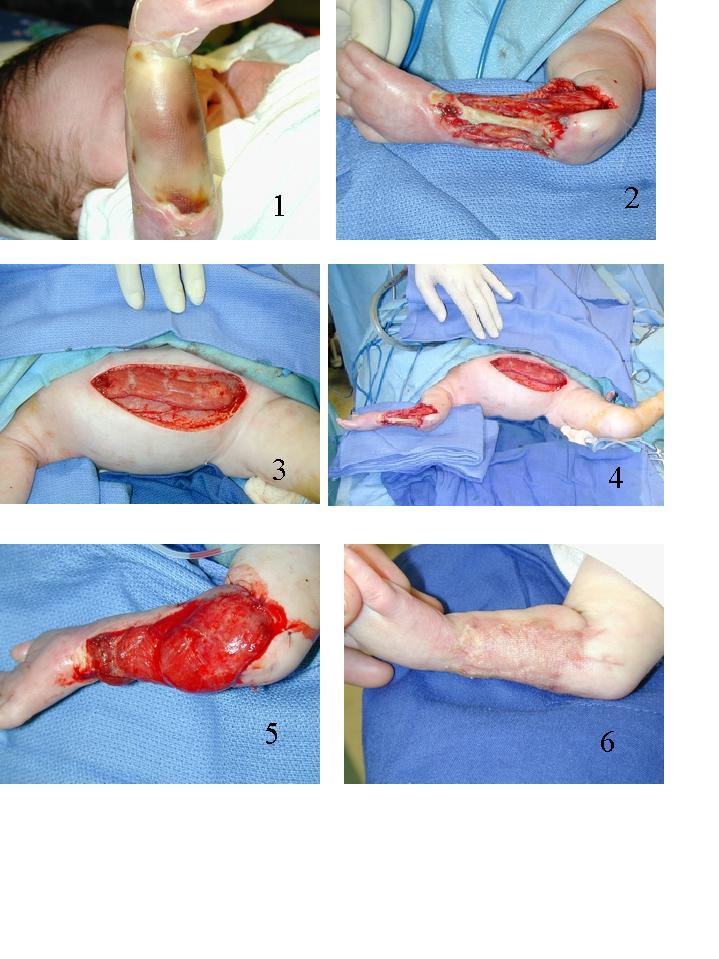Room 2 (Henry B. Gonzalez Convention Center)
Sunday, November 3, 2002
8:00 AM - 4:00 PM
Room 2 (Henry B. Gonzalez Convention Center)
Monday, November 4, 2002
8:00 AM - 4:00 PM
Room 2 (Henry B. Gonzalez Convention Center)
Tuesday, November 5, 2002
8:00 AM - 4:00 PM
Room 2 (Henry B. Gonzalez Convention Center)
Wednesday, November 6, 2002
8:00 AM - 4:00 PM
493
P27 - Free-Flap Treatment of Congenital Pressure Necrosis of the Forearm in the Neonate
Purpose: Congenital necrosis of the upper extremity is a rare and deforming phenomenon. The etiology can be diverse and frequently indeterminate, but the end result is a neonate with a soft tissue defect of the hand and or forearm. This report describes the microsurgical treatment of a full-thickness loss of the forearm in a newborn. We believe that this is the youngest patient in the literature to have received successful free tissue transfer. Methods: The primary case will be detailed in conjunction with a review of the current literature Results: A male infant weighing 6 lbs. 7 oz. was born with blistering of the ulnar aspect of the forearm. Within several days it became clear that the skin over the ulnar forearm was non-viable and the child was taken to the OR for debridement (1). During debridement it was found that the underlying forearm musculature was also non-viable. After two weeks and several more debridements the child was taken to the OR for definitive treatment. Removal of all non-viable tissue resulted in a defect of 60 % of his forearm skin and musculature with exposed ulna, ulnar nerve and artery (2. Of note the child was insensate from birth in his ulnar and median nerve distributions. During the operation his ulnar and median nerves were completely neurolysed, and a rectus abdominus(3,4) was microsurgically transferred to his arm for coverage (5). Pedicle length was 1 cm and pedicle diameter was .8 mm. The flap survived without complication and the child went on to demonstrate a completely healed wound with a return in median and ulnar nerve sensation(6). He has continued to undergo intermittent operations to release ulnar sided contractures. Conclusions:Aggressive treatment of large soft tissue losses can be undertaken with the knowledge that free tissue transfer in the neonate is feasible.

View Synopsis (.doc format, 2750.0 kb)
See more of Posters
Back to 2002 Complete Scientific Program
Back to 2002 Meeting home
